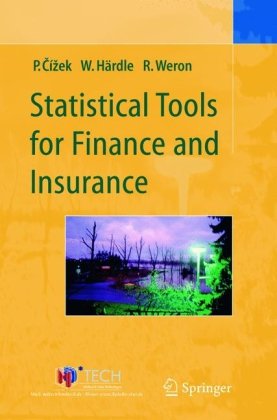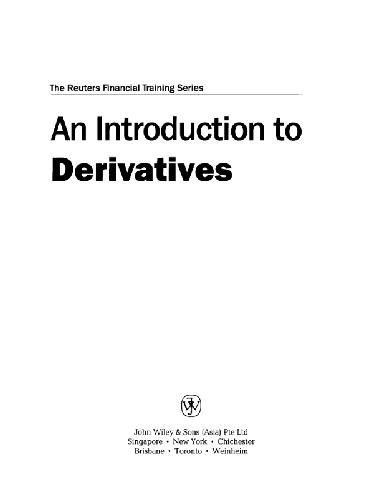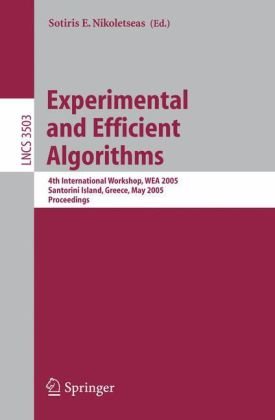Pavel Cizek, Wolfgang Karl Härdle, Rafal Weron3540221891, 9783540221890
Statistical Tools for Finance and Insurance presents ready-to-use solutions, theoretical developments and method construction for many practical problems in quantitative finance and insurance. Written by practitioners and leading academics in the field of quantitative finance and insurance, this book offers a unique combination of topics from which every market analyst and risk manager will benefit.
Covering topics such as heavy tailed distributions, implied trinomial trees, pricing of CAT bonds, simulation of risk processes and ruin probability approximation, the book does not only offer practitioners insight into new methods for their applications, but it also gives theoreticians insight into the applicability of the stochastic technology. Additionally, the book provides the tools, instruments and (online) algorithms for recent techniques in quantitative finance and modern treatments in insurance calculations.
Written in an accessible and engaging style, this self-instructional book makes a good use of extensive examples and full explanations. The design of the text links theory and computational tools in an innovative way. All Quantlets for the calculation of examples given in the text are supported by the academic edition of XploRe and may be executed via XploRe Quantlet Server (XQS). The downloadable electronic edition of the book enables one to run, modify, and enhance all quantlets on the spot.
Table of contents :
Contents……Page 5
Contributors……Page 17
Preface……Page 19
I Finance……Page 22
1.1 Introduction……Page 23
1.2 Definitions and Basic Characteristics……Page 24
1.3 Simulation of α-stable Variables……Page 30
1.4 Estimation of Parameters……Page 32
1.5 Financial Applications of Stable Laws……Page 38
2.1 Introduction……Page 47
2.2 Multivariate Time Series……Page 55
3.1 Introduction……Page 67
3.2 What is Tail Dependence?……Page 68
3.3 Calculation of the Tail-dependence Coefficient……Page 71
3.4 Estimating the Tail-dependence Coefficient……Page 77
3.5 Comparison of TDC Estimators……Page 80
3.6 Tail Dependence of Asset and FX Returns……Page 83
3.7 Value at Risk – a Simulation Study……Page 86
4.1 Introduction……Page 94
4.2 Compound Doubly Stochastic Poisson Pricing Model……Page 100
4.3 Calibration of the Pricing Model……Page 101
4.4 Dynamics of the CAT Bond Price……Page 105
5.1 Introduction……Page 116
5.2 Implied Volatility Surface……Page 117
5.3 Functional Data Analysis……Page 119
5.4 Functional Principal Components……Page 122
5.5 Smoothed Principal Components Analysis……Page 126
5.6 Common Principal Components Model……Page 128
6 Implied Trinomial Trees……Page 136
6.1 Option Pricing……Page 137
6.2 Trees and Implied Trees……Page 139
6.3 Implied Trinomial Trees……Page 141
6.4 Examples……Page 148
7.1 Introduction……Page 161
7.2 Heston’s Model……Page 163
7.3 Option Pricing……Page 166
7.4 Calibration……Page 169
8.2 Modern Pricing Models……Page 182
8.3 Option Pricing with FFT……Page 187
8.4 Applications……Page 191
9.1 Introduction……Page 200
9.2 Optimally Prepaid Mortgage……Page 203
9.3 Valuation of Mortgage Backed Securities……Page 211
10 Predicting Bankruptcy with Support Vector Machines……Page 223
10.1 Bankruptcy Analysis Methodology……Page 224
10.2 Importance of Risk Classification in Practice……Page 228
10.3 Lagrangian Formulation of the SVM……Page 231
10.4 Description of Data……Page 234
10.5 Computational Results……Page 235
10.6 Conclusions……Page 241
11 Modelling Indonesian Money Demand……Page 247
11.1 Specification of Money Demand Functions……Page 248
11.2 The Econometric Approach to Money Demand……Page 250
11.3 The Fuzzy Approach to Money Demand……Page 258
11.4 Conclusions……Page 264
12 Nonparametric Productivity Analysis……Page 269
12.1 The Basic Concepts……Page 270
12.2 Nonparametric Hull Methods……Page 274
12.3 DEA in Practice: Insurance Agencies……Page 277
12.4 FDH in Practice: Manufacturing Industry……Page 279
II Insurance……Page 285
13.1 Introduction……Page 286
13.2 Empirical Distribution Function……Page 287
13.3 Analytical Methods……Page 289
13.4 Statistical Validation Techniques……Page 300
13.5 Applications……Page 308
14.1 Introduction……Page 315
14.2 Claim Arrival Processes……Page 317
14.3 Simulation of Risk Processes……Page 325
15.1 Introduction……Page 336
15.2 Exact Ruin Probabilities in Infinite Time……Page 341
15.3 Approximations of the Ruin Probability in Infinite Time……Page 345
15.4 Numerical Comparison of the Infinite Time Approximations……Page 358
15.5 Exact Ruin Probabilities in Finite Time……Page 362
15.6 Approximations of the Ruin Probability in Finite Time……Page 363
15.7 Numerical Comparison of the Finite Time Approximations……Page 369
16.1 Introduction……Page 375
16.2 Brownian Motion and the Risk Model for Small Claims……Page 376
16.3 Stable Lévy Motion and the Risk Model for Large Claims……Page 380
17.1 Introduction……Page 388
17.2 Fractional Brownian Motion and Model of Good and Bad Periods……Page 389
17.3 Ruin Probability in Limit Risk Model of Good and Bad Periods……Page 392
17.4 Examples……Page 395
18 Premiums in the Individual and Collective Risk Models……Page 400
18.1 Premium Calculation Principles……Page 401
18.2 Individual Risk Model……Page 403
18.3 Collective Risk Model……Page 409
19.1 Introduction……Page 420
19.2 General Formulae for Premiums Under Deductibles……Page 421
19.3 Premiums Under Deductibles for Given Loss Distributions……Page 429
19.4 Final Remarks……Page 443
20.1 Introduction……Page 446
20.2 Single-Period Criterion and the Rate of Return on Capital……Page 449
20.3 The Top-down Approach to Individual Risks Pricing……Page 452
20.4 Rate of Return and Reinsurance Under the Short Term Criterion……Page 456
20.5 Ruin Probability Criterion when the Initial Capital is Given……Page 462
20.6 Ruin Probability Criterion and the Rate of Return……Page 470
20.7 Ruin Probability, Rate of Return and Reinsurance……Page 474
20.8 Final remarks……Page 480
III General……Page 482
21.1 Introduction……Page 483
21.2 The XploRe Quantlet Client……Page 484
21.3 Desktop……Page 486
C……Page 499
D……Page 500
F……Page 502
I……Page 503
M……Page 504
P……Page 505
R……Page 507
T……Page 508
X……Page 509







Reviews
There are no reviews yet.